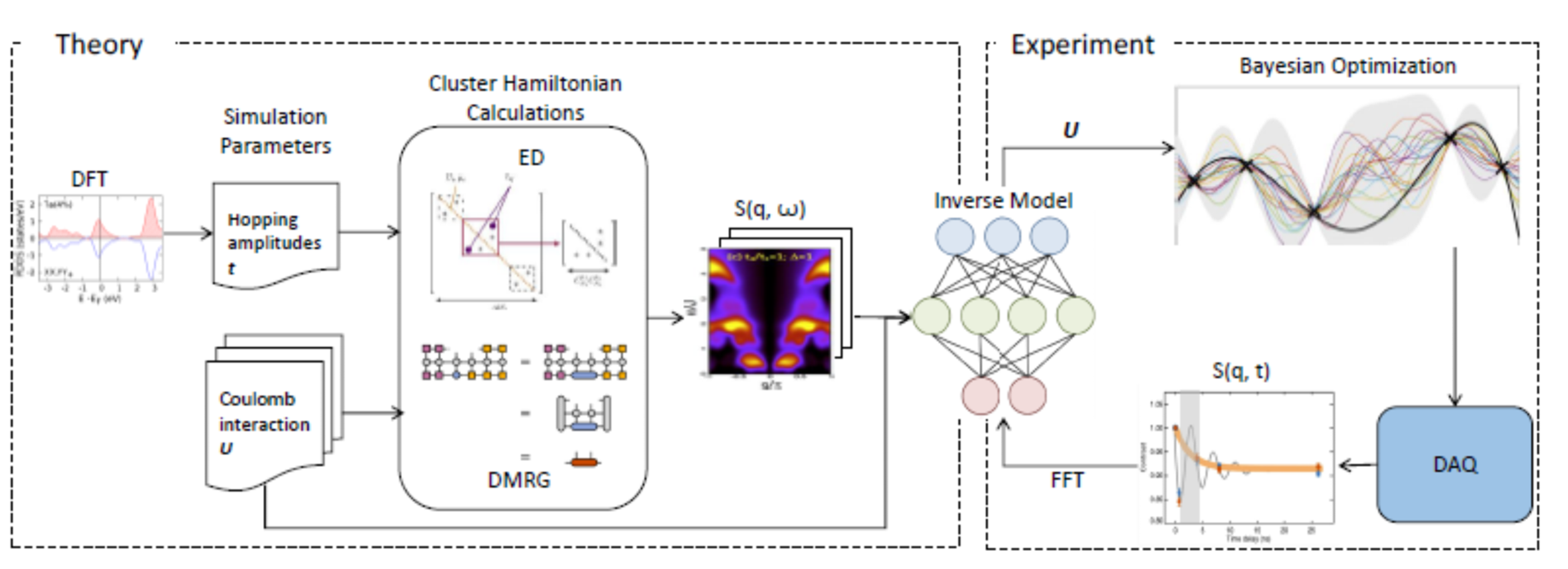Research
| A schematic diagram illustrating our approach |
|
|
| A dataset is generated by running three different types of simulations on material and used to train a surrogate model, which is subsequently employed to solve the inverse problem of retrieving simulation parameters, such as the Coloumb interaction U, from the measured S(q, ω) surfaces, and eventually used to guide in situ measurements to reduce the uncertainty over the predicted parameter space. |
Thrust 1. Spontaneous fluctuations in topological magnets
- Magnetic properties of FeGd, EuAgAs, and EuAl4 at ambient temperature.
- Effects of substrates, strains, and overlayers on stability will be assessed to ascertain the robustness of our theoretical predictions.
- Understand the formation of Skyrmions and their sizes and how they can be tuned.
Thrust 2: Quantum fluctuations in low dimensional systems
Low-dimensional systems present a playground to study the phenomenon of fractionalization and the emergence of exotic excitations. We will focus on compounds that realize a rich phenomenology in 1D as follows.
- Spin-orbital fluctuations in the pyroxene family of 1D Mott insulators, such as AM(Si,Ge)2O6, where A is an alkali atom and M a trivalent metal element.
- Spin, orbital and lattice excitations in the 1D-cuprate CuGeO3.
We will use state-of-the-art tDMRG and ED to obtain in CuGeO3 and pyroxenes both the excitation spectra and the inelastic response as a function of time to complement our non-equilibrium x-ray and electron scattering experiments. We will use both effective models and realistic multi-band Hamiltonians with parameters extracted from first-principles calculations.
Thrust 3: Quantum spin liquid
We will explore the α-RuCl3/graphene heterostructure:
- Physics behind charge-neutral QOs;
- Charge-transfer process due to fractional excitations in the presence of an external magnetic field;
- Non-equilibrium response under optical excitation to control the charge-transfer process.
Using material-specific tight-binding models, we will study the magnetic ground states and electronic properties in presence of an external magnetic field and develop a model Hamiltonian for tDMRG and ED. The dynamics of the charge transfer process and how it couples to the intrinsic AFM state will be probed via polarization sensitive THz spectroscopy.


